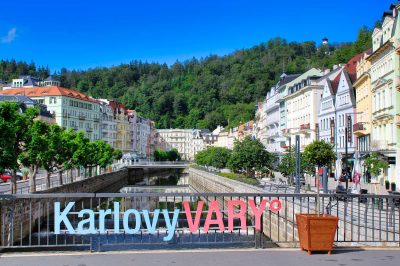Today we are going to Zagreb, the capital of Croatia. Zagreb combines Mediterranean charm with magnificent buildings from the imperial period and is one of the most beautiful and at the same time coziest capitals in Europe. In this article I would like to introduce you to the city, which I have visited several times, and show you the best things to do in Zagreb. But first I would like to introduce you to the city as a whole.
This is Zagreb
Zagreb is, as already mentioned, the capital of Croatia. With nearly 800,000 inhabitants, Zagreb is one of the largest cities in southeastern Europe. Zagreb is located on the Sava River, which divides the city into an old and a modern part from the Yugoslav period (Novi Zagreb). For tourists, mainly the areas north of the Sava are interesting. Zagreb can be divided into two tourist zones there: a lower town, characterized mainly by buildings from the Austro-Hungarian period, and an upper town, which has numerous monuments from the Middle Ages and pre-modern times in the two districts of Graded and Kaptol. The two areas are connected by steeply ascending alleys, but also by a funicular railroad.
Despite its large population, Zagreb is a very cozy and not very hectic city, at least in the center. You could actually do everything on foot and see the many Zagreb sights comfortably in two days without having to rush. If you want to stay longer, you can hike in the north of the city, Zagreb is located in the picturesque Medvednica Mountains and on the outskirts of the city you can visit Medvedgrad Castle and Sljeme, two sights that have nothing to do with the beautiful old town. However, we would like to introduce you to the best things to do in Zagreb and then give you a few practical tips for your visit!
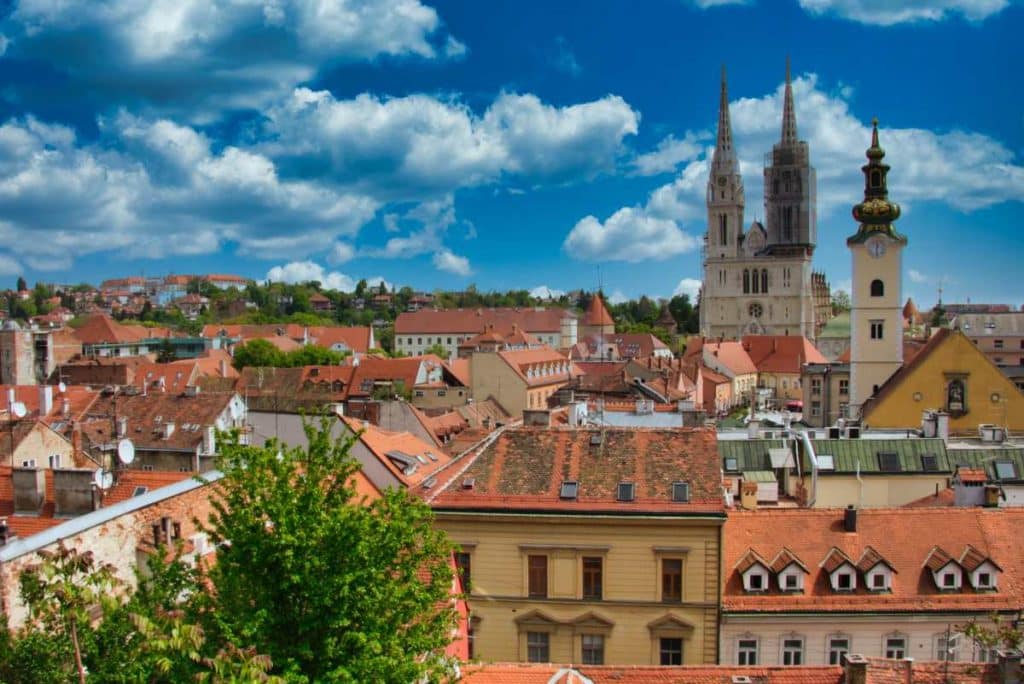
St. Stephen’s Cathedral
St. Stephen’s Cathedral is the landmark of the city and is located on the so-called Capitol Hill. It is the highest building in Croatia. In 1880 there was a devastating earthquake in the city and the previous building of the cathedral was also destroyed. Hermann Bollé, an architect from the Rhineland, was subsequently allowed to run wild and created many of the Zagreb landmarks that still exist today, including the neo-Gothic style cathedral. Unfortunately, because Bollé relied on white limestone here, St. Stephen’s Cathedral has to be renovated time and again.
Inside, an ornate Baroque pulpit, an 18th-century high altar and the tomb of Alojzije Stepinac await you. Stepinac worked during World War II and is revered throughout the country, but is not without controversy internationally. It is true that he helped several Jews and thus saved their lives. On the other hand, he also openly supported the Ustaša regime and its anti-Serbian policies. Today, a small museum in the cathedral commemorates the controversial blessed. Other highlights in Croatia’s most important cathedral include a triptych by Albrecht Dürer and the treasury. Fun detail: the kitschy chandeliers in the church come from the stock of a bankrupt Las Vegas casino.
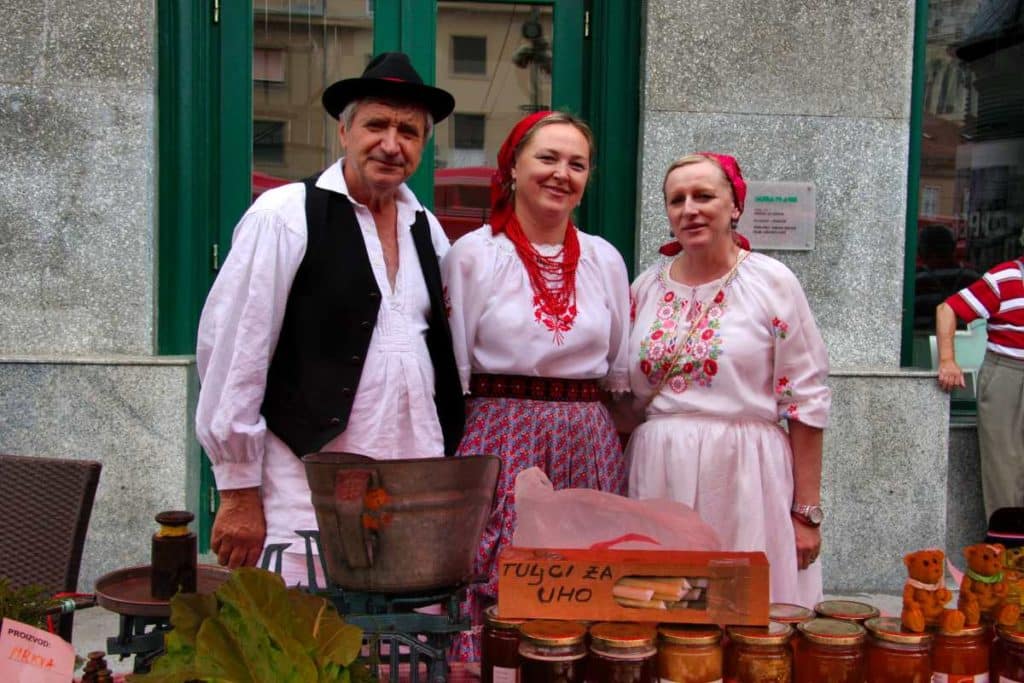
Dolac Market
The Dolac market on the edge between the upper and lower town is also called the “belly of the city”. And indeed, you can eat your fill here. There is almost nothing that is not available, but above all you will find regional products, which are offered by the farmers every day under red umbrellas. A stroll along the Dolac is an essential part of a visit to Zagreb. There is also an underground part where a sea of smells awaits you. Turkish spice merchants, Bosnian butchers and Dalmatian fishmongers – here traders from many regions offer their products.
Funny statues
Near the market there are also two funny statues: One of them, Kumica Barica, commemorates the market women who used to lug their goods, heavily packed, to Dolac. The other is dedicated to Petrica Kerempuh, to whom the writer Miroslav Krleža, born here, set a literary monument.
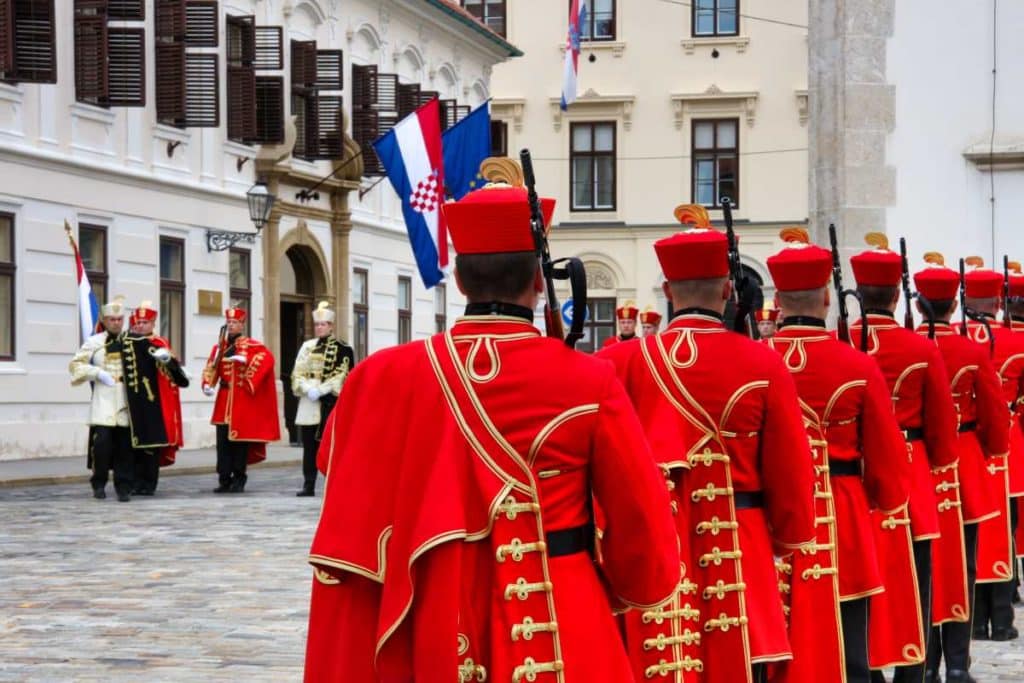
St. Mark’s Church and St. Mark’s Square
The western part of the upper town, i.e. Gradec, was once laid out as a secular counterweight to the “spiritual” Kaptol, where the clergy held sway. Here you will find many cozy alleys, medieval pharmacies and quaint stores. The center of this uniquely beautiful ensemble is St. Mark’s Square with St. Mark’s Church in the center. With its colorful roof, it is another important Zagreb sight. The square is also home to the Sabor, the Croatian Parliament, and the Banus Palace. In the past, the Croatian viceroy lived here, but today President Zoran Milanović is residing here. The changing of the guard in front of the Presidential Palace, which you can see in the picture, is one of the most exciting events in the Croatian capital and always takes place on Saturdays at 12 noon during the summer.

Museum of broken relationships
How they came up with the idea of making a museum on the subject of heartbreak remains a mystery to me, but in the meantime the exhibition has become so popular that there is even an offshoot in Los Angeles. In the museum, you sometimes have to smile, for example when a modem that says “we tried to connect, it didn’t work” is on display. But often the exhibits are very personal pieces that symbolize the tragic failure of a relationship. The beauty of the museum is that anyone can participate and send their items to the house. With a little luck, the objects will then be exhibited. Well, maybe it will help with lovesickness …
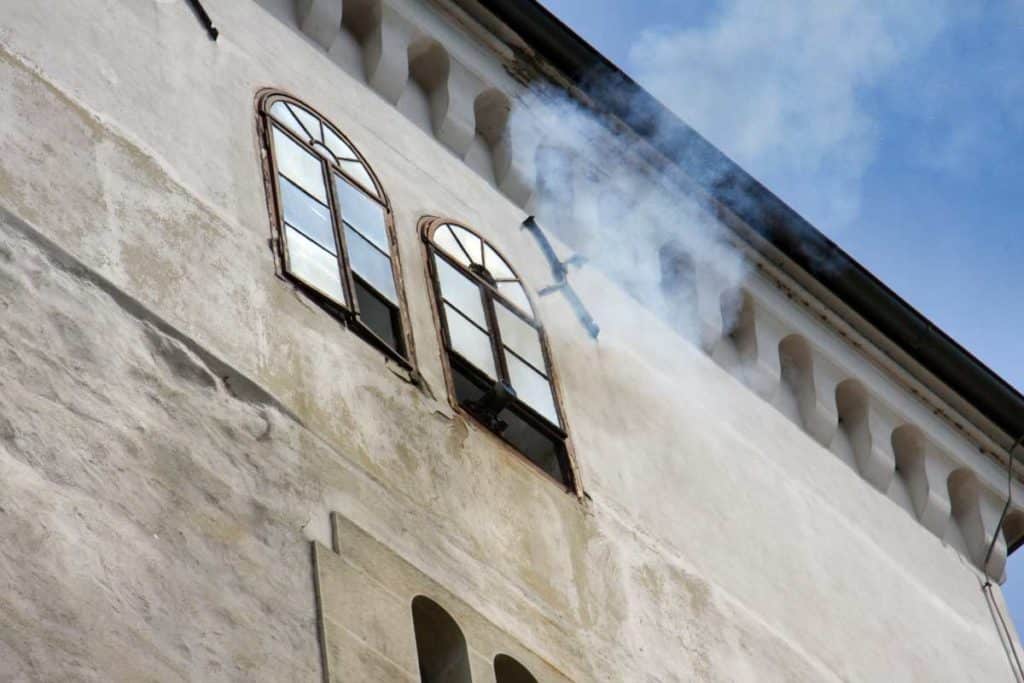
Lotrščak Tower
The change of guard is kicked off by a deafening cannon shot, but it always sounds from the Lotrščak Tower at 12 o’clock sharp on all other days as well. The cannon is probably the only one that sounds through its own Facebook account. Punctually at 12 o’clock the following post is made there: “Boom!”. The medieval tower used to be integrated into the city fortifications and stands on the edge of Gradec Hill. It houses a branch of the Zagreb Tourist Information. But you can also climb the tower and enjoy a wonderful view over Gradec and St. Mark’s Church.
Historical means of transportation
By the way, the Lotrščak Tower is located directly on a nice promenade, from which a historical funicular also travels to the Lower Town. With its 66 meters, the Uspinjača has one of the shortest rides in the world, a ride takes place at only 5 km/h, but of course you can also get to the Lower Town on foot.
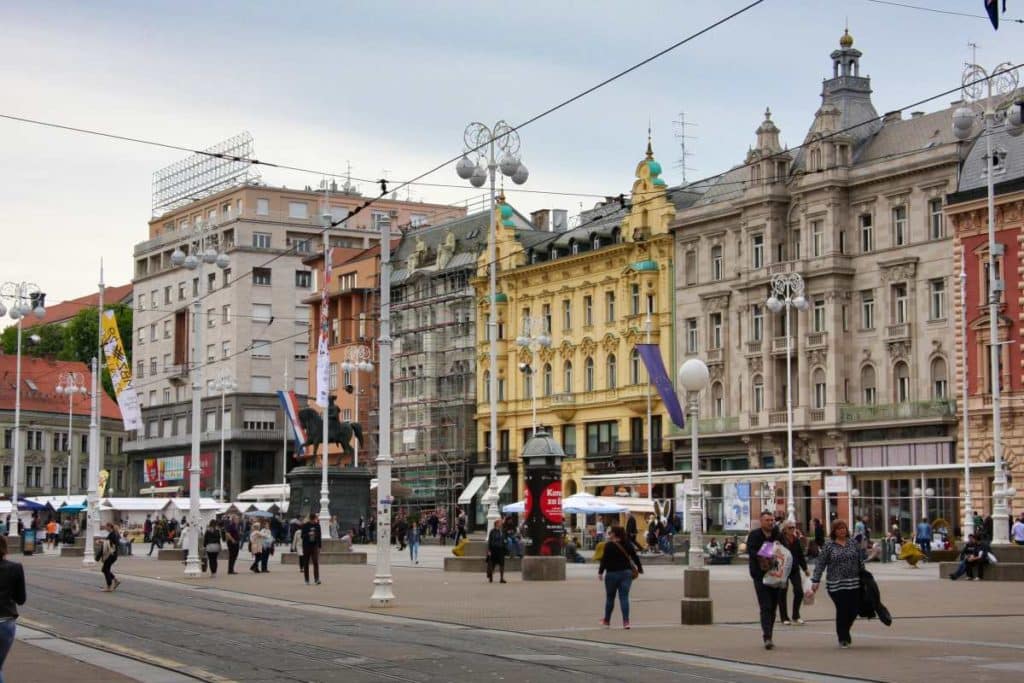
Ban Jelačić Square
Once there, you’re sure to immediately notice the Ilica, Zagreb’s central shopping street and perhaps the most famous street in the country. This part of the city is characterized by buildings built during the reign of Austria-Hungary over Zagreb. In the middle of the street is Ban Jelačić Square. The square is like a jigsaw puzzle, where buildings in different styles fit together. From classicism to Yugoslav modernism, just about all styles are represented here. Here you can also take the elevator up into the sky to Zagreb Eye, a viewing platform with a chic bar that I recommend especially during sunset.
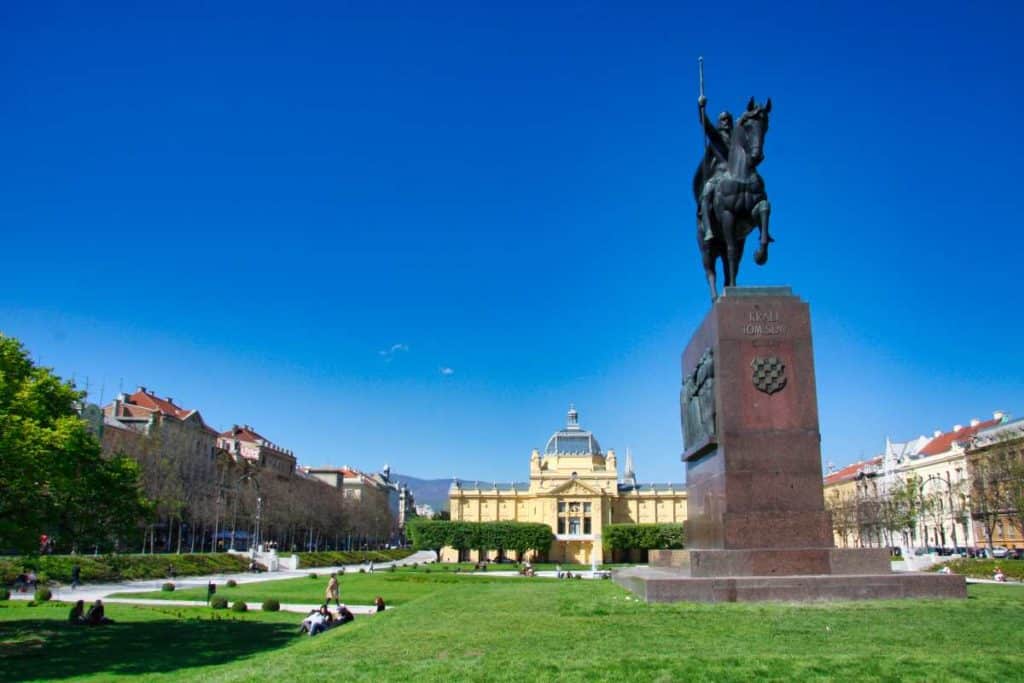
The Green Horseshoe
South of Jelačić Square is the so-called Green Horseshoe, an ensemble of seven green spaces that extend in the shape of the letter “U” to the main train station. While the traffic roars around the squares, you can discover a lot on the green strips, but also simply relax and find a bench to sit on. On the picture you can see the impressive statue of King Tomislav and in the background the Art Pavilion. Not only do exciting exhibitions take place here, the building is also a technical masterpiece. Originally it was located in Budapest, but then it was dismantled and brought to Croatia.
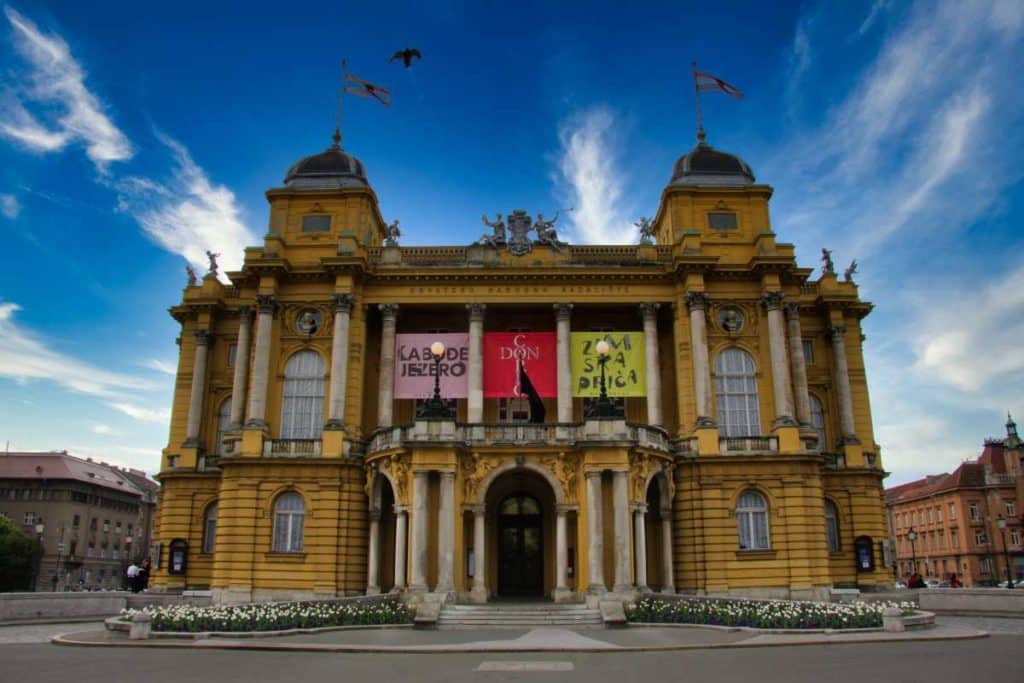
Croatian National Theater
The northwestern end of the Green Horseshoe is marked by the Croatian National Theater. It was designed by Fellner & Helmer, masters of theater construction, who also built important theaters in Lviv, Timisoara, Vienna, Karlovy Vary, Odesa and Toruń. For the opening of the theater in 1895, Emperor Franz Joseph traveled from Vienna to admire the neo-baroque masterpiece. Today, you can see the beautiful interior for yourself at a performance. Tickets are available directly on the theater’s website, and are very inexpensive by Western European standards.
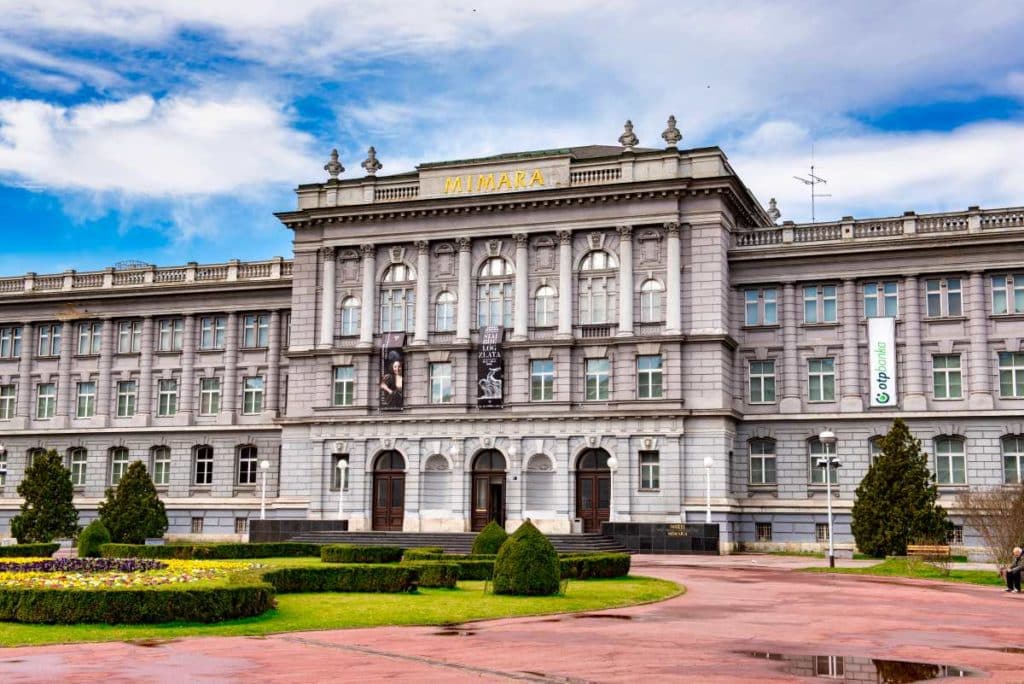
Mimara Museum
A bit off the horseshoe stands one of Zagreb’s most exciting sights, the Mimara Museum. How the “Croatian Louvre” got its collection is disputed. Some say donor Ante Mimara personally bought the paintings from Hermann Göring, but it’s likely he simply forked over pieces when looted art was returned to Yugoslavia after the war and bequeathed them to the city of Zagreb instead of the central government in Belgrade. Be that as it may, what there is to see here is not of bad parents: Caravaggio, Bosch, Velázquez, Rubens, Renoir, Monet van Dyck – the Who is Who of art history is represented here. The building with its atrium is also worth seeing, so you should make time for a visit to the Mimara Museum.

Croatian National Archive
At the southern end of the Green Horseshoe rises the Croatian National Archives. An archive is not normally a place tourists would go to on their first visit to a city, but the Zagreb National Archive is no longer an insider’s tip. It is perhaps the most beautiful building in the Lower Town and a jewel of European Art Nouveau. Emperor Franz Joseph shook his head at the horrendous construction costs, and even now the building gobbles up vast sums of money. But today, for little money, you can visit the first floor and see for yourself the many paintings, ornate chandeliers and tables. Several reading rooms await you here, in which the most famous artists and craftsmen of Austria-Hungary participated.

Archaeological Museum
Once you have walked around the horseshoe, you will have passed the Botanical Garden, the legendary Esplanade Hotel and the chic train station. At the northeastern end of the Green Horseshoe, another absolute highlight awaits you, the Archaeological Museum. Here you can admire not only treasures from Croatia’s long history, but also a mummy wrapped in a cloth. This cloth has Etruscan characters and is the longest completely preserved text in this still not fully deciphered language. Also cool is a ride on the rickety cage elevator that has been doing reliable service here since 1917.
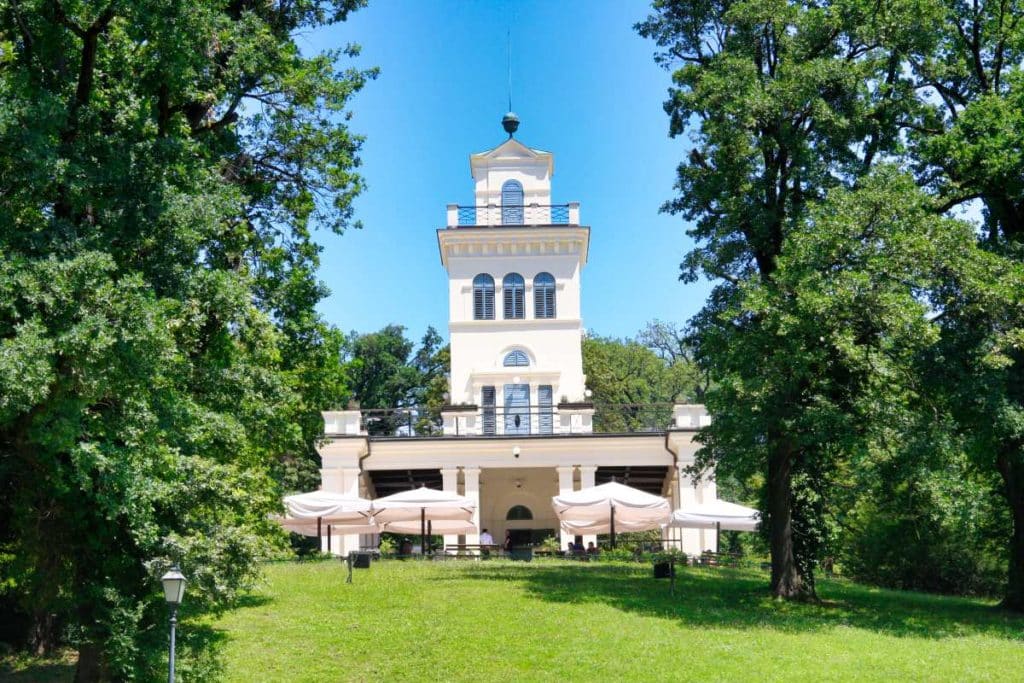
Maksimir
Fancy a day out? There is a lot to see not only in the center, but also on the eastern outskirts of the city. For example, there is the Maksimir Park. With 316 hectares, it is the largest park in southern Europe. Since the 18th century, the Maksimir has been the green lung of the city. In the course of time, not only beautiful pavilions of different styles (including such exotic buildings as an Alpine-style house) were built, but also many lakes, secluded walking paths and even a zoo. By the way, on the edge of the park stands the Maksimir Stadium, the legendary venue of Dinamo Zagreb.
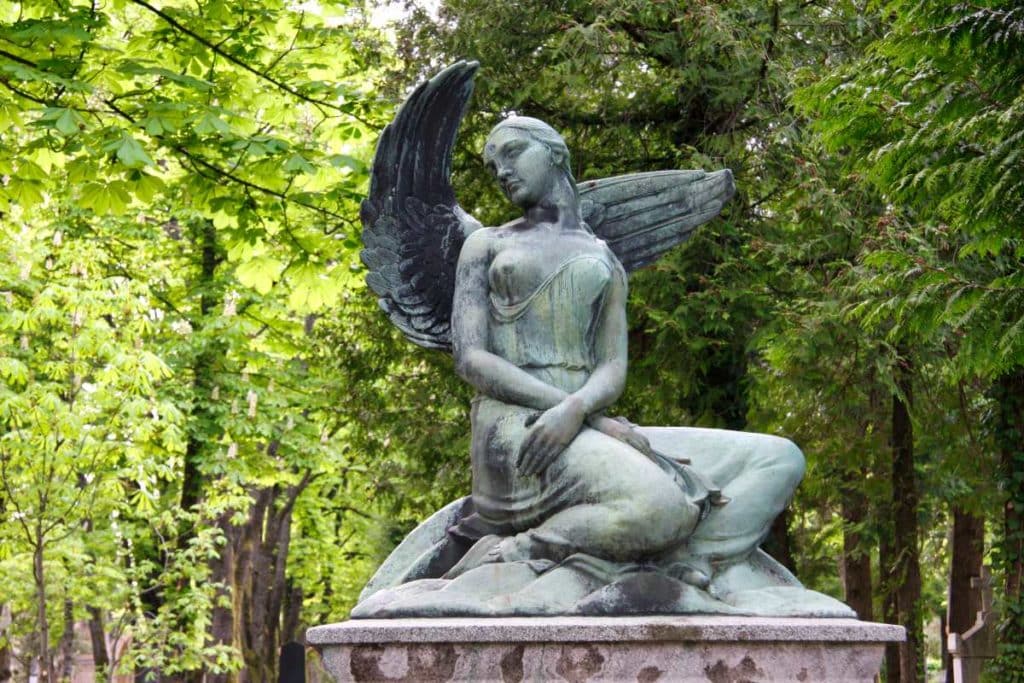
Mirogoj
North of Maksimir Park is the Mirogoj Cemetery, the central burial ground in Croatia. More than 350,000 people have been buried here. The list of prominent Croats who found their final resting place here is almost endless. The porticoes at the entrance to the cemetery are particularly impressive, and afterwards you should simply let yourself drift through the grounds and be enchanted by the artistic monuments and gravestones. You will also find an Orthodox church here, as well as several memorials. QR codes, which are attached to the most important stations on the more than 7 hectares large area, are helpful for the exploration.
Practical travel tips Zagreb
If you want to see the many Zagreb sights, you will certainly want to take a break along the way, and you will also need a roof over your head. Our practical travel tips for Zagreb will surely help you.

Food and Drink
The choice of places with Croatian cuisine is wide. These are my favorite places in the city:
- La Štruk, Skalinska ul. 5. Here you can find one thing above all: Štruklji, filled strudel in all imaginable variations. The Zagreb classic is prepared to perfection here, and whether you’re in the mood for something savory or sweet, everything from pumpkin pesto to blueberry štruklji is served here.
- Kod Mike, ul. Ivana Tkalčića 59. The beauty of this small restaurant is that you can watch the chef at work. The main dishes served here are Croatian grilled classics. By the way, Tkalčića Street, where the restaurant is located, consists almost exclusively of restaurants, pubs and bars, so you will definitely not get bored here in the evening.
- The Old Pharmacy, ul. Andrija Hebranga 11. Everyone has their favorite places. Mine is the Old Pharmacy, where I once celebrated New Year’s Eve. The old pharmacy was remodeled in the style of a British pub, and you can still find the old furniture in every corner. One of the coziest and at the same time coolest hangouts in town!
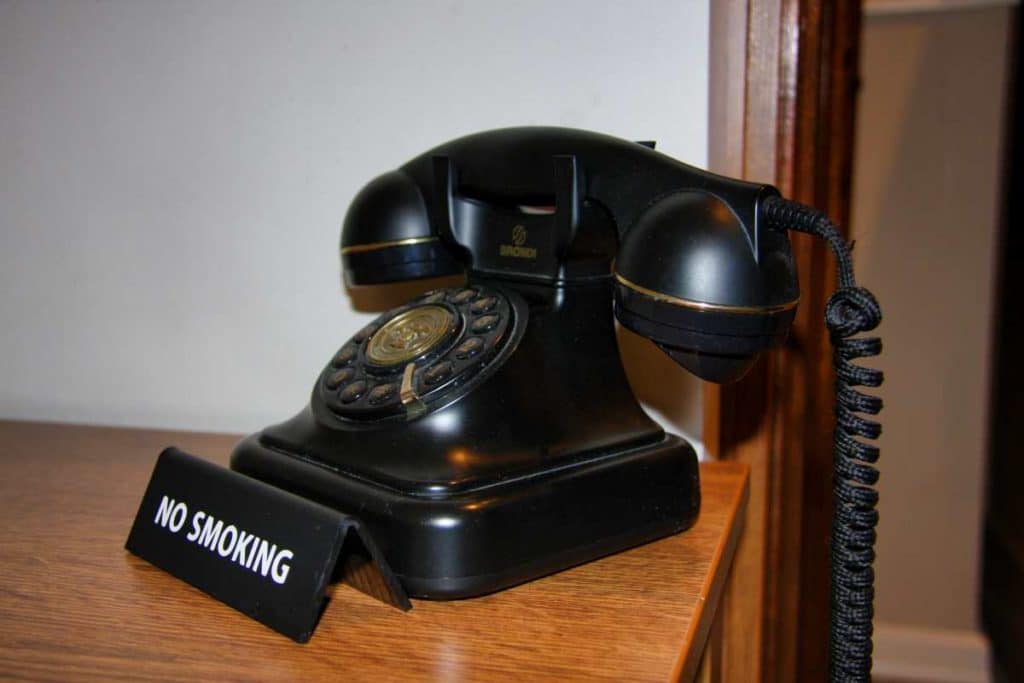
Accomodation
- Esplanade*: Zagreb’s most iconic accommodation was built during the Austro-Hungarian era as a station for travelers on the Orient Express and is, in a way, a Zagreb landmark in its own right. Here you can sleep in the same rooms as all the emperors, kings and movie stars who have visited Zagreb.
- Hotel Jägerhorn*: The Jägerhorn is also a house with history. The rooms in the 200-year-old building were all individually designed by local artists. In the beautiful attached café with fountain in the courtyard you can also enjoy delicious homemade cakes.
- Chillout Hostel*: In the inexpensive hostel you live in an absolute dream location right next to the “valley” station of the funicular. Especially if you are traveling alone, you will quickly make friends here, because the hostel has a nice pub. Pub crawls are also organized, which will take you to the coolest locations in the city.
Tours
- Classic three-hour-guided-tour*: During this tour you can explore the city at your leisure, an English-speaking guide will explain the most beautiful Zagreb sights along the way and also show you a few hidden gems.
- Culinary Tour*: Want to take a different approach and are hungry? During this four-hour English-speaking tour, you’ll pass by several restaurants and enjoy classic Croatian cuisine. Of course, you’ll also learn a lot about the city.
Best things to do in Zagreb Book recommendation
Great inside into Zagreb’s troubled history. After reading this, you will see the city with different eyes.
- Bingel, Markus (Author)


